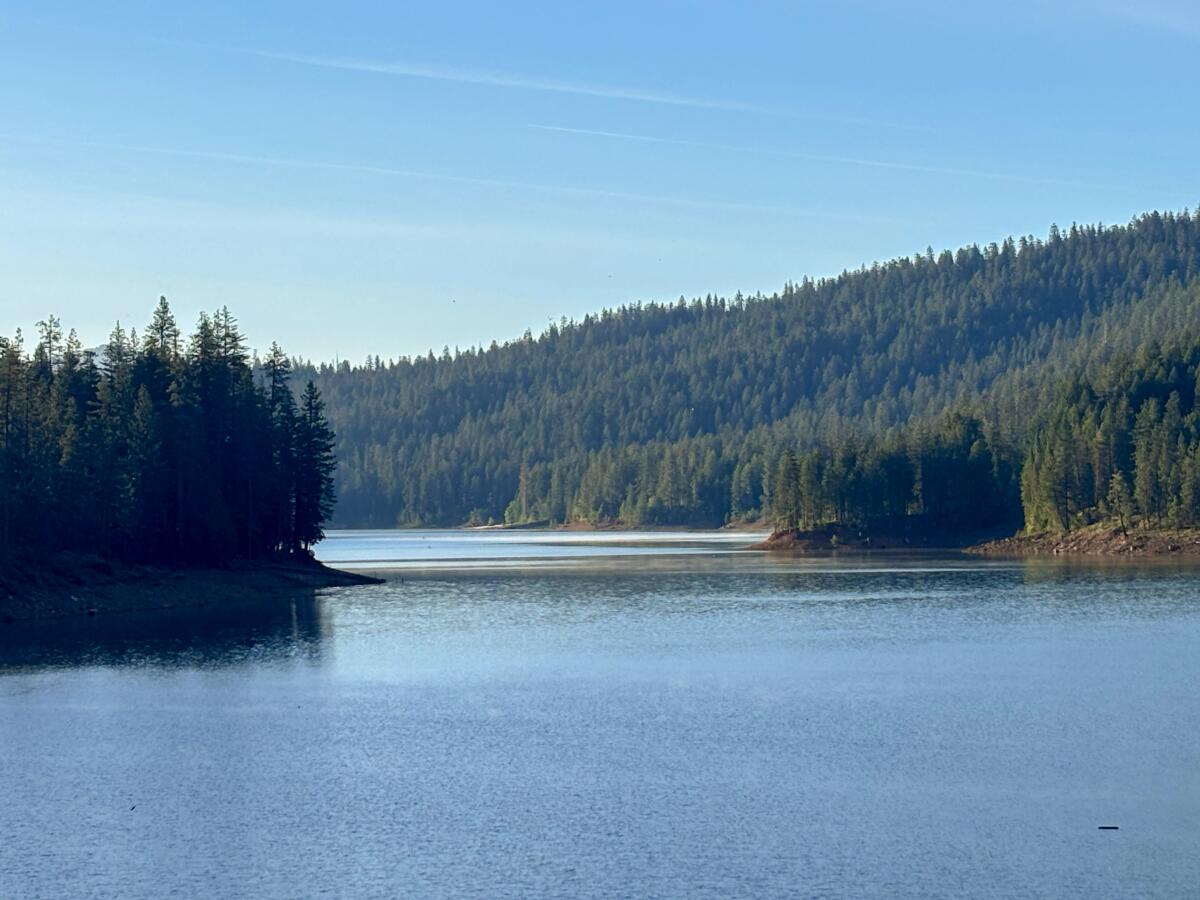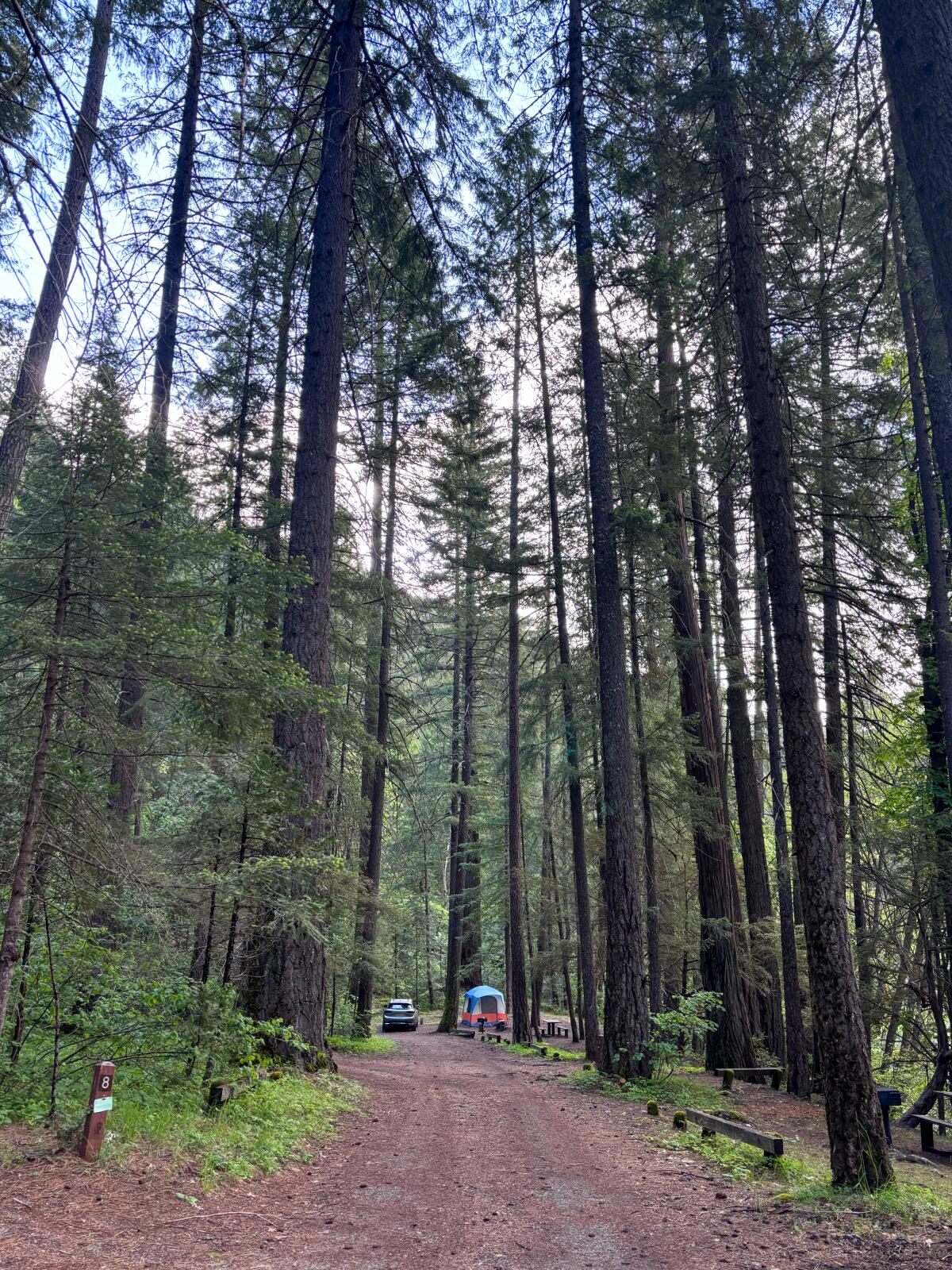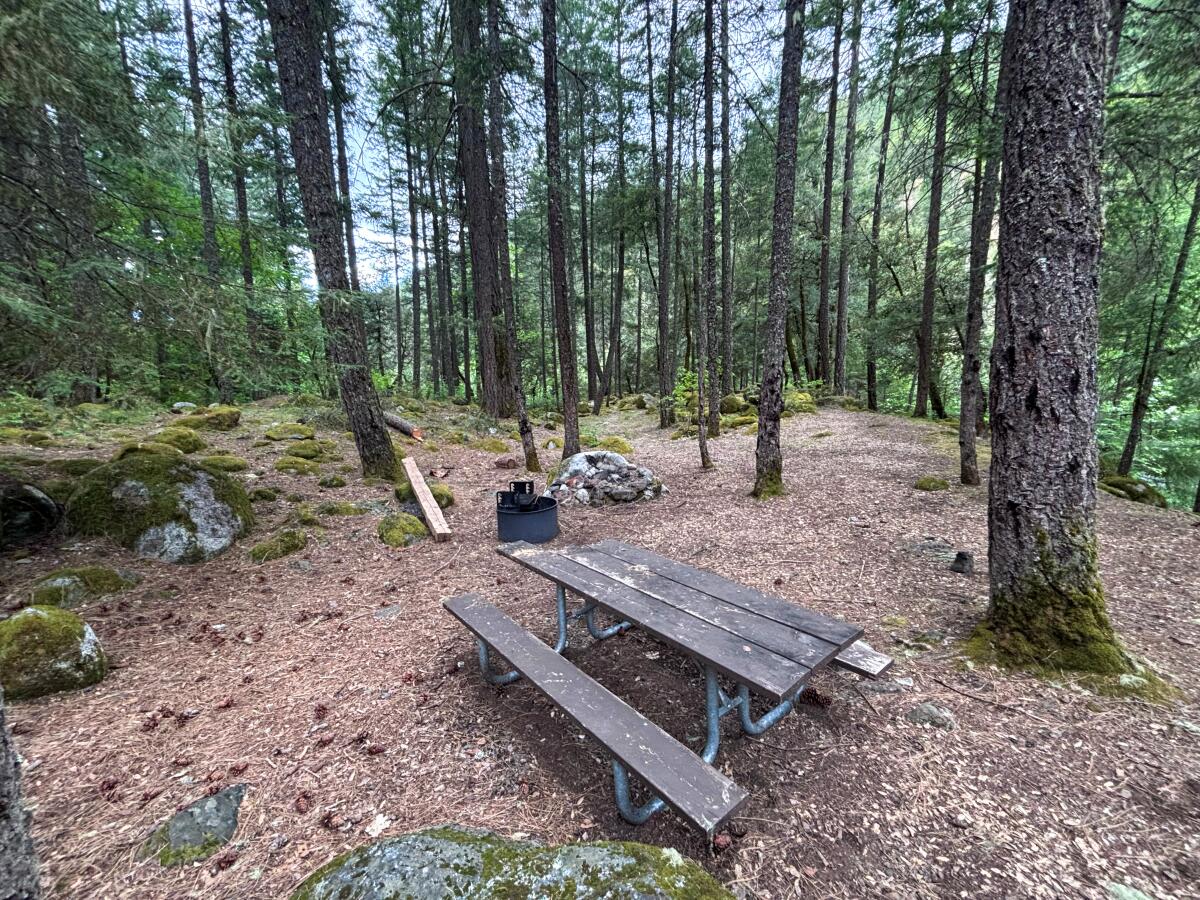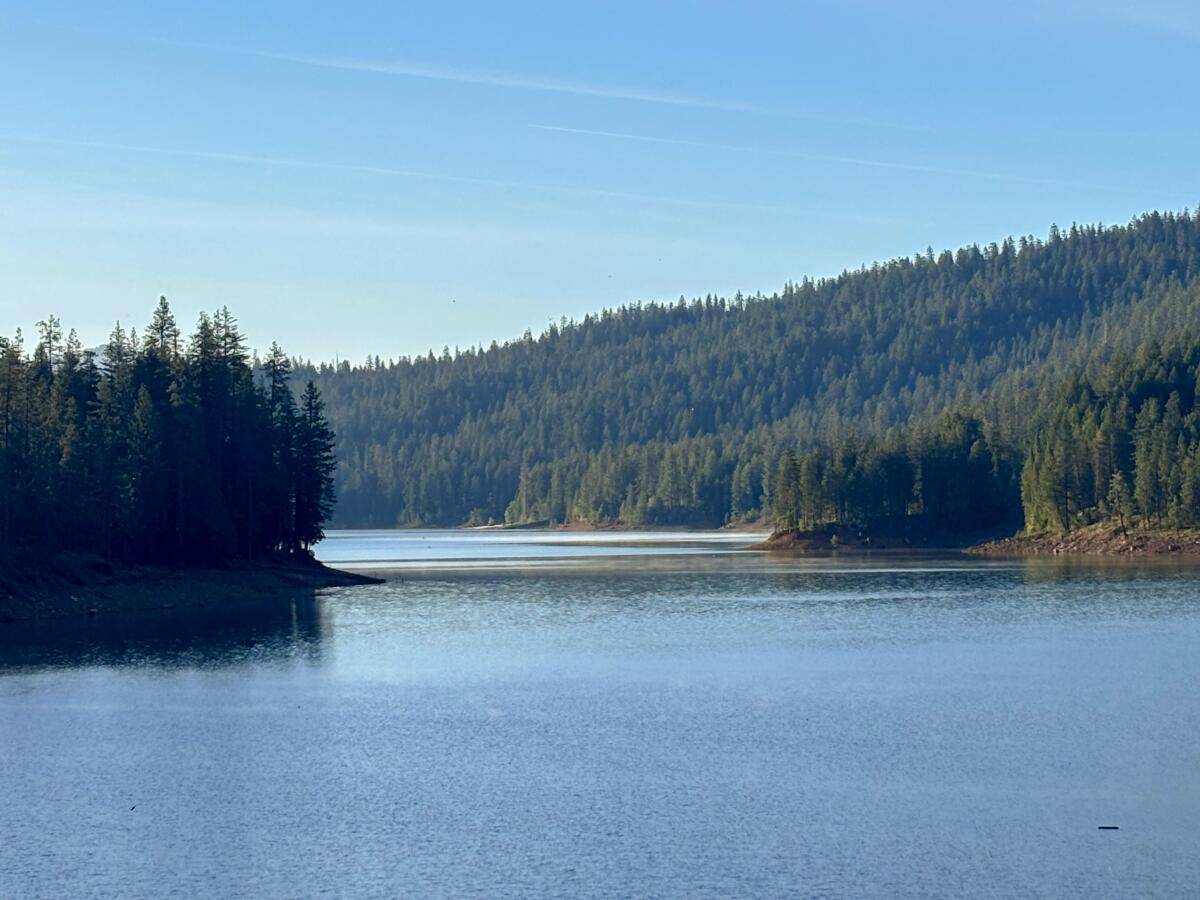
Trinity Lake, at its fullest, has 145 miles of shoreline and is 2.5 million acre-feet of water. It is an artificial lake formed by the creation of the Trinity Dam, a massive earth-filled dam, in the 1960s.
(Jaclyn Cosgrove / Los Angeles Times)
The Trinity Alps is home to several campgrounds, resorts and limitless backcountry camping spots. There are several campgrounds around Trinity Lake, including Hayward Flat, Jackass Springs and Bushytail, which has showers. Rental cabins and resorts (and also a Buddhist retreat center where you can rent various accommodations) are scattered throughout the Trinity Alps for those wanting to sleep in something beyond a nylon-walled tent.
Here are some of the campgrounds that hikers should consider when planning a trip to the Trinities.
Big Flat Campground
Remote and deeper in the Trinities than others on this list, the Big Flat campground in Klamath National Forest has nine first-come, first-served campsites just off the South Fork of the Salmon River. It is farther north than other sites on this list, nearest to the Coffee Creek community where there’s a general store that sells cold beer and sandwiches.
Hikers camping here will have several trails to choose from, including arduous but rewarding treks to Caribou Lakes, the Yellow Rose Mine or Ward Lake. The site sits at about 5,000 feet and is typically closed until later in the summer when snow in the area has melted enough for the campground to be safely accessed. It is best to call or check in person at the ranger station to ensure your vehicle is suitable to make the drive on Coffee Creek Road.
Bridge Camp Campground

Bridge Camp has 10 campsites, each with picnic tables and fire rings.
(Jaclyn Cosgrove / Los Angeles Times)
Bridge Camp is a 10-site first-come, first-served campground situated along the Stuart Fork, a tributary of the Trinity River, in Shasta-Trinity National Forest. Situated about 17 miles north of Weaverville, the campground has potable water available from Memorial Day to Oct. 31.
To reach the campground, you’ll drive through the charming Trinity Alps Resort, which rents out rustic red cabins named after California counties, and onto a narrow gravel road. Use extreme caution on this final stretch of your journey as the southern edge of the roadway has a steep drop-off that plunges down to the Stuart Fork.
The campground is an arboreous escape shaded by massive old trees and, under safe conditions, guests can enjoy a cool dip in Stuart Fork’s clear waters.
Backpackers will often stay a night here because it shares its location with the Stuart Fork Trailhead, where they can start a multi-day trip to Emerald and Sapphire Lakes, which are 14 and 15 miles away, respectively. This trip to reach the 21-acre Emerald Lake (at a depth of 68 feet) and 43-acre Sapphire Lake (at 200 feet deep) is one of the most popular among backpackers in the Trinities. The Stuart Fork trail also makes for great day hiking regardless of how far you go.
As a bonus, Trinity Alps Resort, only two miles from the campground, has a general store that’s open to the public and features an ice cream counter and a restaurant, Bear’s Breath Bar & Grill, that advertises a “world famous” spaghetti buffet — just in case you forget your can opener and need an easy spot for dinner.
Mary Smith Campground
Mary Smith, a 17-site campground on Lewiston Lake shoreline, treats guests with one thing none of the other sites on this list provide: glamping. Six of its campsites, each available to reserve through recreation.gov, offer yurts including queen beds with linens, down comforters and pillows, along with two nightstands and an oversized rug. Outside the yurts, guests will find armchairs, a coffee table, fire pit and picnic table. Not a bad place to rest after hiking and swimming all day!
The campground, shaded by large pine and other trees, has flush and vault toilets and drinking water. Guests can marvel at great views of the lakes and wildflowers that blanket the area through the summer. It’s a great spot to camp for anyone wanting to kayak or canoe, as the lake has a 10-mph speed limit for watercraft.
Ripstein Campground

The Ripstein campground has 10 sites for tent camping near the popular Canyon Creek trailhead.
(Jaclyn Cosgrove / Los Angeles Times)
Ripstein is a 10-site first-come, first-served campground in Shasta-Trinity National Forest that’s shaded by tall trees with a natural soundscape of nearby Canyon Creek. It has multiple roomy campsites, including a few next to the river that deliver pristine views and privacy.
The popular Canyon Creek Trailhead is just under a mile away, and a popular swim area is close too. Nearby parking areas can fill up on weekends so it’s best to arrive early to the trailhead or walk from your campground. Backpackers use this campground as a quick stopover before heading out.
Although Ripstein doesn’t have potable water or flush toilets, it boasts a landscape so vibrant and green, it feels like walking into a fairy tale. For those campers willing to rough it a bit, it’s an A-plus choice.
